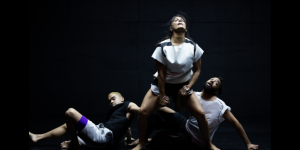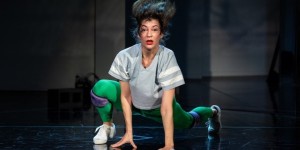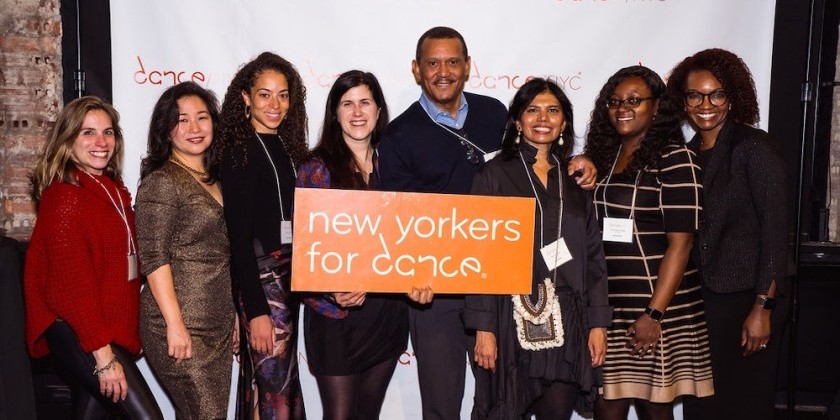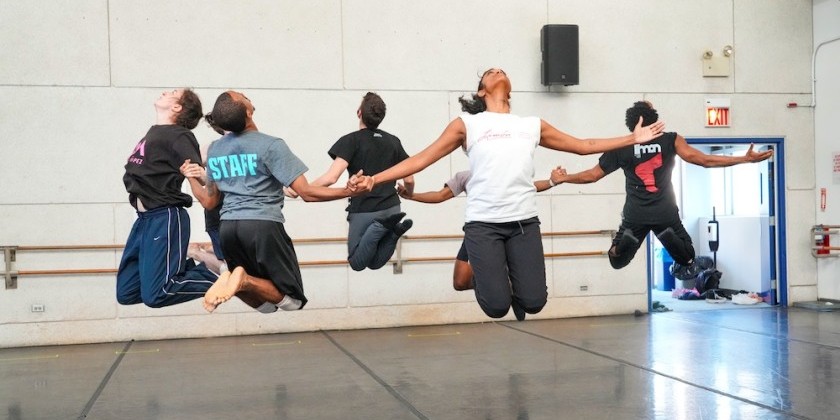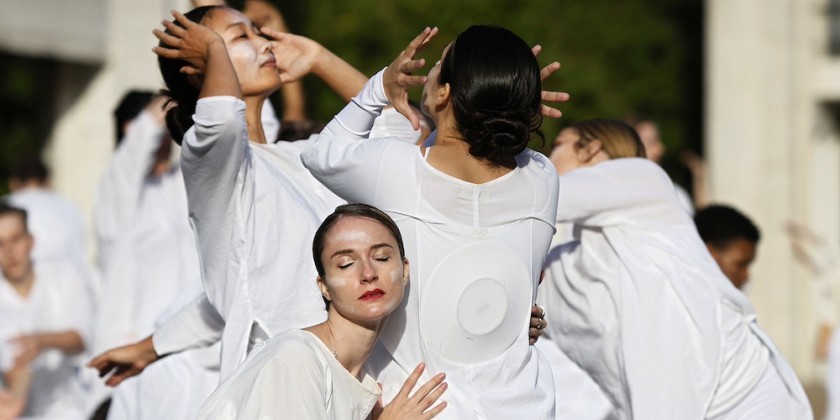IMPRESSIONS: Take Dance
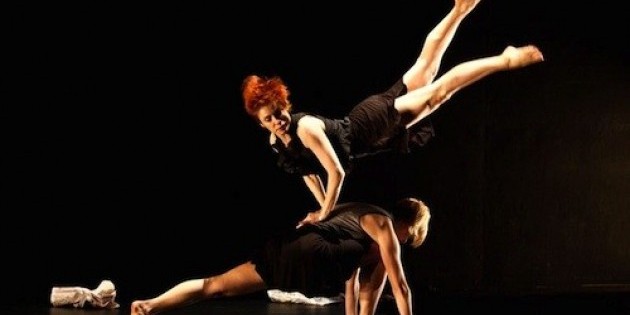
"SALARYMAN"
IMPRESSIONS: Take Dance's SALARYMAN
The Nagelberg Theater, Baruch Performing Arts Center, New York
Friday February 10th, 8pm
Choreography: Takehiro Ueyama ; Co-Creator/Visual/Sound: Yuko Takebe
Assistant Choreographer: Jill Echo
Lighting: Jason Jeunnette; Set Design: Yukinobu Okazaki; Costumes: Taylor Forrest
Dancers: Kirsten Arnold, Brynt Beitman, Jill Echo, John Eirich, Kile Hotchkiss, Gina Ianni, Clinton Edward Martin, Nana Tsuda Misko, Lynda Senisi, Marie Zvosed and Takehiro Ueyama
Violinist : ANA MILOSAVLJEVIC
Enough Is As Good As A Feast.
©Christine Jowers for The Dance Enthusiast
In Take Dance’s SALARYMAN, there is a three or four minute section of movement (a brief moment within a larger chunk of material) that perfectly distills the working day of your average office drone.
The company’s ten member cast, in virtually identical suits, go through the motions of an awful commute, a back-biting work day, the ecstasy of a cigarette break, and finally the inevitable, drunken stupor of post-work cocktails that ends with several anonymous sex romps. After a post-coital cigarette or two, and a bit of sleep, the “worker bees” waddle to their morning trains to begin the whole de-humanizing cycle again. This dancing bit is so well turned out that one could mistakenly think choreography of the literal kind is a cinch to create. But this type of precision requires a particular brilliance, and Take Dance happens to flash with it.
 |
| Take Dance in SALARYMAN Photo © Koykat |
Takehiro Ueyama’s choreographic observations are keenly accurate, accessible (but not dumbed down), and expertly danced. It is challenging to take on a stereotype and not be cliché. This man needs to choreograph for Broadway, and why isn’t he?
The dancers are also arresting. It is a pleasure to watch performers who can handle explosive and precise physicality, subtle rhythmic shifts and emotional range. In SALARYMAN the artists play with broad and and refined characterizations, acrobatic stage sparring, musicality, and bursts of athleticism coupled with quiet mystery. Both Jill Echo and Ueyama deliver poignant solos: she as a housewife looking for love amidst the crassness of cheap sex, and he as a businessman for whom even a handshake is excruciating.
To see such talent in an intimate space is a treat to be savored.These people should be exploding on opera size stages around the world. After attending a Broadway play the weekend before this show for which tickets were one hundred and fifty bucks a pop (I was treated), it felt especially weird to know that the price for this show and its' top shelf artists was a mere twenty dollars per seat. Don’t get me started on the crazy economics of dance.
 |
| Take Dance in SALARYMAN Photo © KoyKat |
Were there problems with SALARYMAN? Yes. It was too much and too long. For all his brilliant moments of clarity and sensitivity, Ueyama doesn’t seem to know when to stop making stuff up. In the first act, the whole morning scene, depicting the company inside a humongous sheet-- as if in a group bed-- seems superfluous, as does,for me, the second act.
Ueyama’s tragic solo that concludes Act I -- ‘I’m worried now but I won’t be worried long’ -- employs ideas of water: water torture and a fish out of water, to reveal his characters’ incapacity to handle the office politics that can terrorize a sensitive soul. Ueyama’s massive, athletes figure is reduced to flailing and rolling along the floor while the company of cold automatons march over him. This proves too much for Ueyama's salaryman, and finally, in a quiet moment upstage, he hangs himself.
This solo was too stunning and powerful to be followed by the film ( however intriguing) and the huge, colorfully costumed, happy piece etcetera etcetera that made up ACT 2 of SALARYMAN. I needed time to contemplate and digest.
 |
| Take Dance in SALARYMAN Photo @Koykat |




